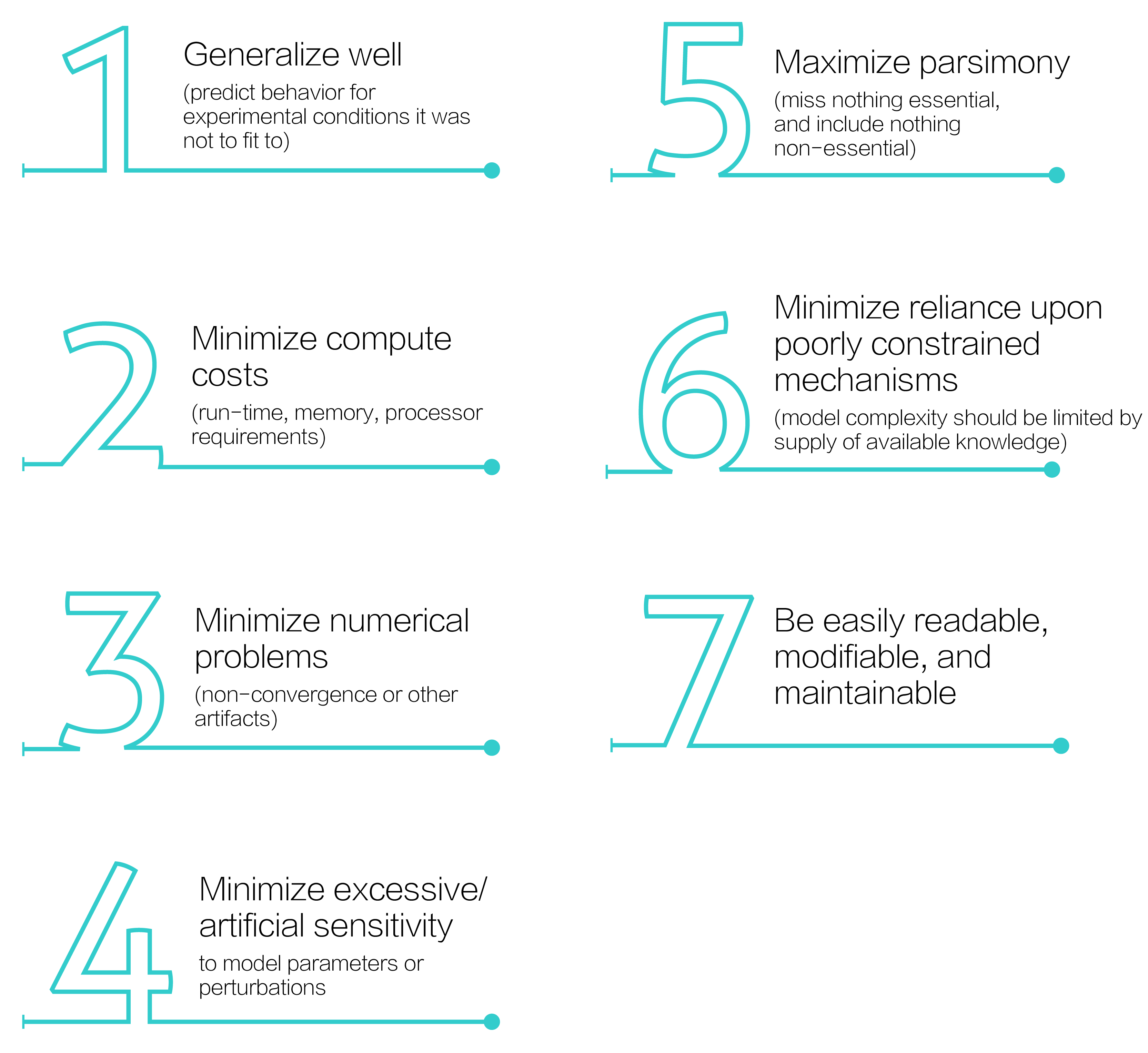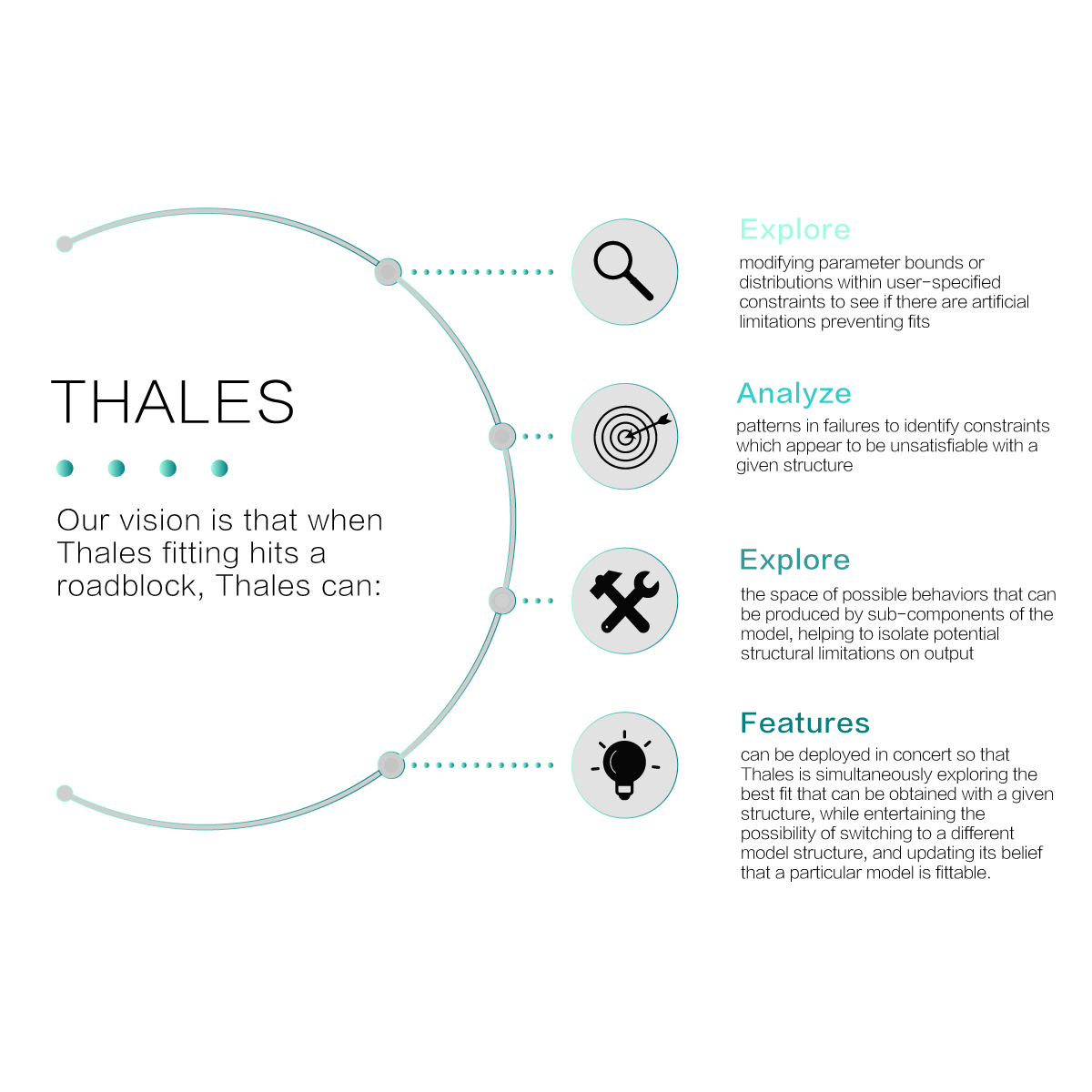Imagine a QSP environment where building models occurs rapidly, model simulation times are fast, and over-engineering models is unnecessary because models can be adapted rapidly to changing requirements

Thales is:
- A model building platform that automates and streamlines the QSP modeling process
- The user describes biological influences to model and provides data to constrain parameters
- Thales generates models from influences and assists users with iteratively fitting virtual populations to data
- Thales dramatically speeds the process from biology research to validated virtual population
A “top down” approach:
- Know the specific use of the model
- Start with simple, prototype models that support the desired behavior, and add complexity and refit as needed/when data is available to constrain
- Encourage lightweight, iterative design over heavyweight fixed design: Models are only as complex as they need to be to represent the data
- Model build cycle times are up to 10x faster
- Model revisions are fast (add new biological influences – a new model and population are output)
- Quickly generate patients, assess fit and validation performance of candidate model structures, then refine model design
Model Goals:
Mathematical models must be assessed along many dimensions. Most obviously, a model must reproduce expected behaviors for known inputs. However, good fits alone are far from sufficient.

Building models that simultaneously satisfy all of these criteria is difficult, time-consuming, and frustrating. This is often a discovery process that is poorly documented and difficult to reproduce. Thales aims to help streamline the process of obtaining such models.
The Future:
We are actively developing Thales tools that expand upon our traditional Thales approach:
Computer Aided Model Design:
Model construction raises countless design questions about which mechanisms to model, how to abstract them, and what the consequences of different designs would be. Worse yet, a good model must strike a balance between satisfying many conflicting and sometimes subjective criteria. This results in an iterative process of implementation, tuning, simulation, and refinement. The result can be a high quality-model, but at a great cost of time and effort.
Computer Aided Model Diagnostic:
Simply evaluating the quality of a given model design can be a challenge – even a good design is only useful when properly tuned. When a model fails to reproduce desired behaviors during fitting and validation runs, time-consuming debugging is often required to determine the cause of the failures. Potential causes of failures are nearly endless: flaws in model design, careless errors in model implementation, contradictory fitting targets, poor choice of parameters to fit, errors in target data, poor use of optimization algorithms, etc. Not only is this process painful and costly, but it also discourages users from experimenting with the model for fear of resuming the fitting-debugging cycle.
A recurring question for modelers is whether their design truly isn’t capable of producing the desired results, or whether the proper tuning of that model just hasn’t been found.
We are developing Thales tools to help automate the process of diagnosing model failures.